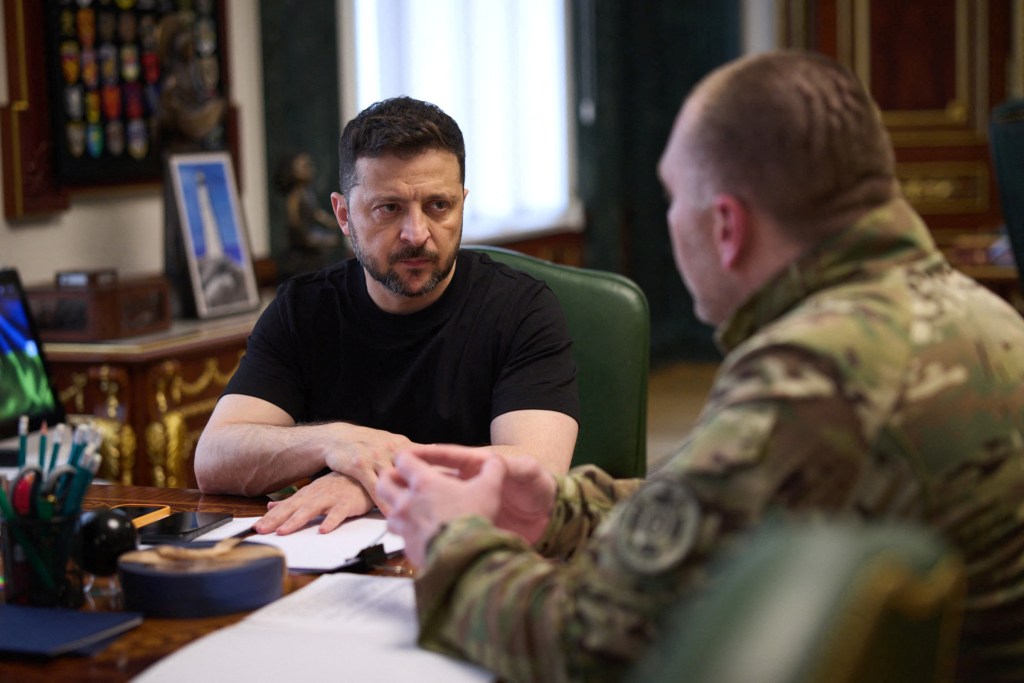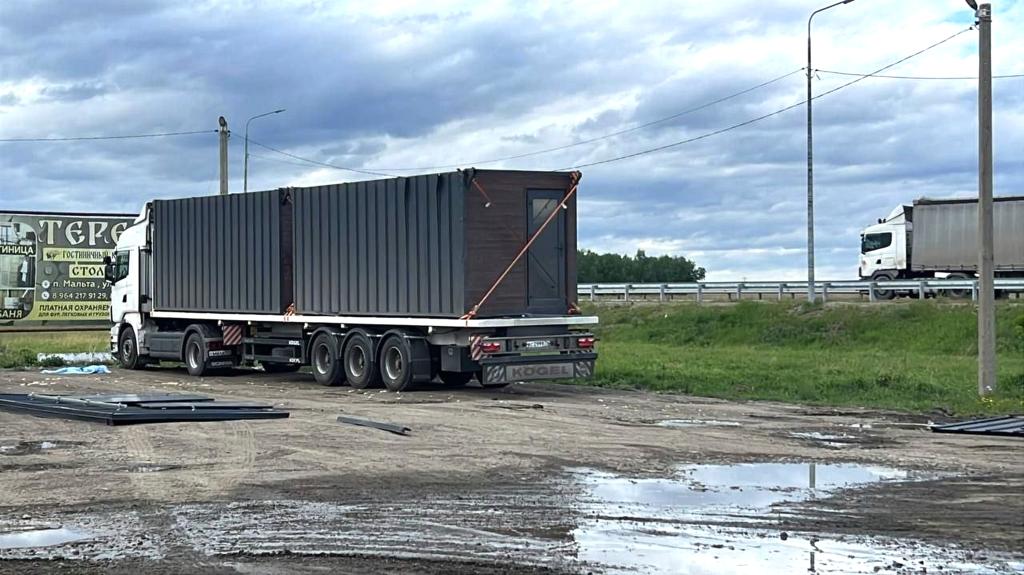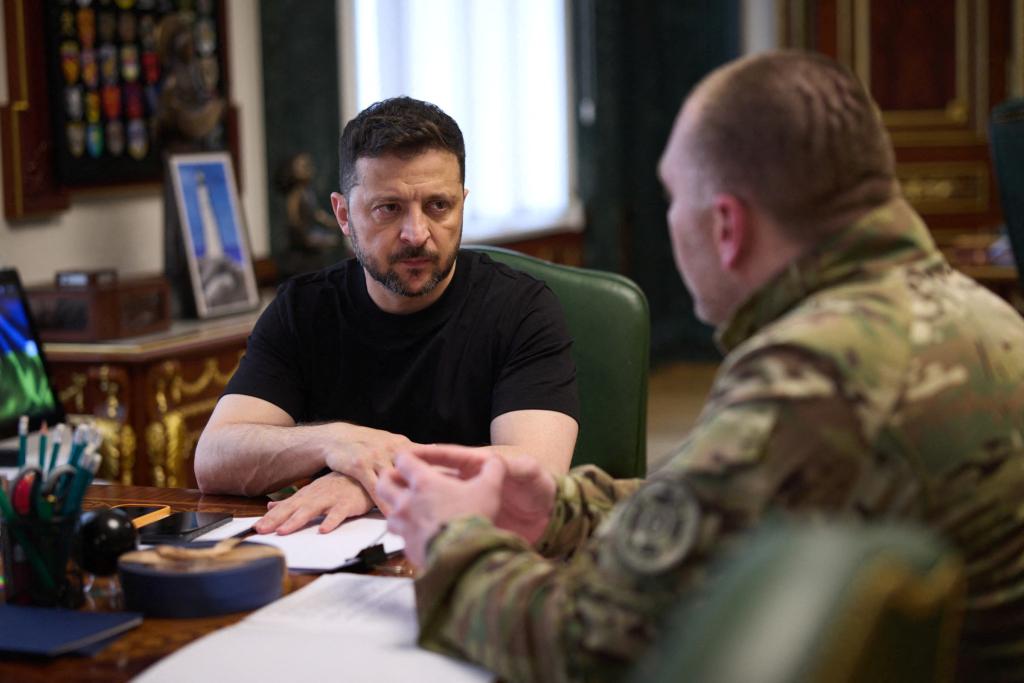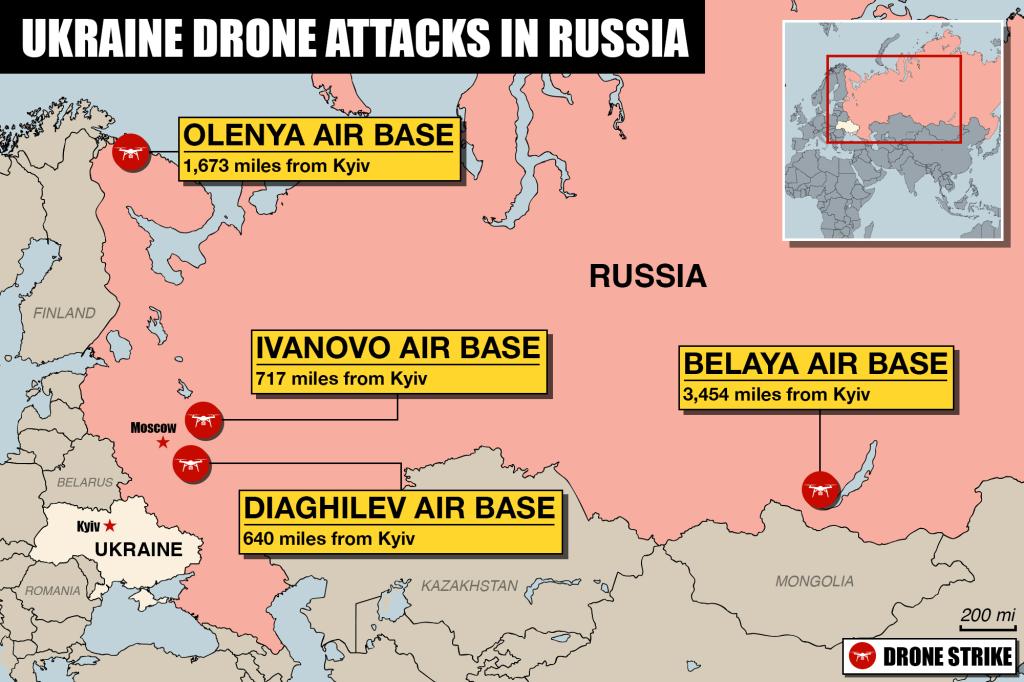The ingenious way Ukraine pulled off its stunning ‘Pearl Harbor’ attack against Russia
Ukraine was able to carry out its stunning “Operation Spider Web” attack on Russian air bases and nuclear fleet by hiding explosives-laden drones in wooden sheds, according to officials.
Kyiv’s secret service (SBU) stashed the attack drones inside the roofs of the sheds, which were loaded onto trucks that were driven to the perimeter of the air bases, Ukrainian authorities revealed in a statement shared on social media.
The roof panels were then lifted off by a remotely activated device so the 117 drones used in the strikes could fly out and make their devastating attacks.
“At the right moment, the roofs of the houses were remotely opened, and the drones flew to hit Russian bombers,” a security source told AP.
The dramatic and carefully planned Sunday assault took Russian President Vladimir Putin and his forces completely unaware.
Some 34% of Russia’s Tu-95 bomber fleet, equipped to carry nuclear payloads, was reportedly wiped out in the raids on five air bases across the country, the SBU said on Sunday.
A total of 41 Russian warplanes were hit in the strikes, causing an eye-watering $7 billion in damage, Ukrainian officials said.
The attack, which involved strikes on bases some 4,000 miles from the Ukrainian border, has already been branded “Russia’s Pearl Harbor” by gloomy pro-Moscow military bloggers.
Ukrainian President Volodymyr Zelensky praised the “absolutely brilliant outcome” of his country’s “longest-range operation” to date, writing on the messaging app Telegram.
The operation — of which the White House was reportedly not given prior warning — took more than a year and a half to prepare, Zelensky said.
Five bases in five different regions of Russia were attacked, including the Amur region in the far east of the country, Irkutsk in Siberia, Murmansk in the Arctic Circle, and Ryazan and Ivanovo close to Moscow, the Russian Defense Ministry said Sunday.
Ukraine’s security service was able to set up its HQ right next to a regional office of the Russian security forces, the FSB, Zelensky bragged on Sunday.
Russian forces suffered “very tangible losses, and justifiably so,” he added.
All of the Ukrainian operatives who took part were smuggled back out of Russia “on the eve of the operation,” he said.
That contrasted with claims made by the Russia’s Defense Ministry that Russian forces had detained some of the individuals involved in the attacks. Sunday’s attacks came just one day before Monday’s scheduled peace talks in Turkey.
Russian and Ukrainian officials met in Istanbul for urgent talks, marking the second round of discussions since March 2022.
The two warring sides met for barely an hour and there was no breakthrough on a ceasefire.
The closely-watched discussion ended after Moscow said it would only agree to end the war if Kyiv gave up large chunks of territory and accepted limits on the size of its army, according to a memorandum reported by Russian media.
Ukraine has repeatedly rejected those demands.
The countries agreed to exchange more prisoners of war — focusing on the youngest and most severely wounded — and return the bodies of 12,000 dead soldiers.
Neither Zelensky nor Putin was present at Monday’s talks.
With Post wires



























